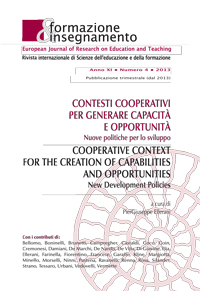Well-structured Cooperative Learning in all classrooms: using the Dual Objective to maximize affective and cognitive gain
Abstract
The authors contend that the research evidence involving Cooperative Learning as a powerful teaching strategy is unprecedented in educational history and is voluminous in breadth. They say that the research supports its use across diverse nations and cultures, across disciplines, with both genders and with all age groups (including higher education). They lament that more educators don’t use it, but they also fear that a greater concern is teachers using badly designed attempts: usually conceptualized as “groupwork”, which fails to meet the specs of the research studies and holds no special promise of success. However, the design and implementation of well-structured Cooperative Learning, as exemplified in their model called The Dual Objective, results in greater conceptual gain, cognitive skill improvement, social skilldevelopment and better self-management by students. This paper explains both Cooperative Learning (CL) as a general category of instructional design and the specific features of the Dual Objective (DO).
##submission.downloads##
Pubblicato
Come citare
Fascicolo
Sezione
Licenza
Copyright (c) 2013 Paul Vermette, Cindy Kline Kline

TQuesto lavoro è fornito con la licenza Creative Commons Attribuzione 4.0 Internazionale.
Formazione & insegnamento è distribuita con la seguente licenza: Attribution 4.0 International (CC BY 4.0).
Per ulteriori dettagli, si rimanda alle Politiche di archiviazione e ai Termini di Copyright e Licenza.





